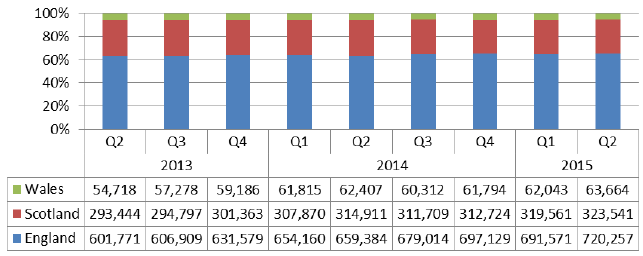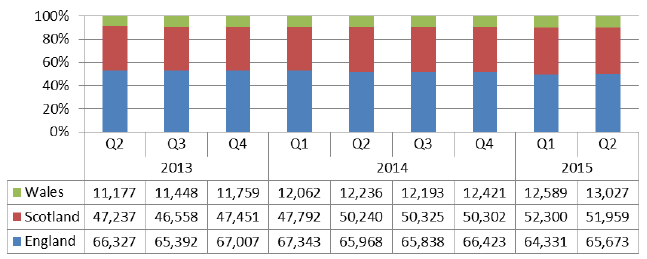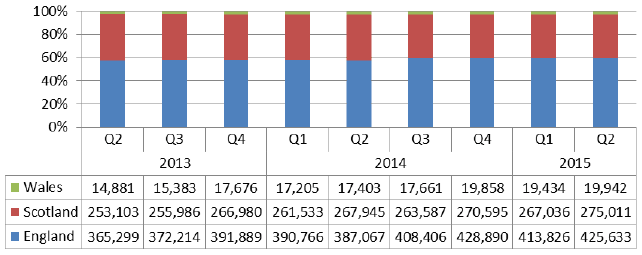Scotland's Credit Unions: Investing in Our Future
Report of the Credit Union Working Group. Review of their work and recommendations to make Scotland an enabling environment for credit unions.
Introduction
1. This report brings together the work carried out by the Credit Union Working Group, established in October 2014 and chaired by Fergus Ewing MSP, Minister for Business, Energy and Tourism.
2. A credit union is a financial co-operative body, owned and controlled by its members. It seeks to promote thrift by encouraging the habit of saving, offers loans at fair and reasonable rates of interest, and often provides other financial services to its members. The membership criterion for all credit unions is known as the "field of membership" (previously known as "common bond"). This may be a geographical area where members live and/or work, an employer, or an association. Credit unions each decide what their membership should be, with approval from the Prudential Regulation Authority (PRA) and Financial Conduct Authority (FCA).
3. Originally founded as an alternative credit provider for underserved communities (Wright, 2013), there is now huge diversity within the sector, ranging from small community based models, to large organisations handling millions of pounds and offering commercial loans and mortgages.
4. Credit unions are authorised by the PRA and regulated by the PRA and FCA and, as with banks and building societies, members' savings are protected by the Financial Services Compensation Scheme up to £75,000 per person.
5. Scotland has a proportionately higher level of credit union membership than the other nations in the United Kingdom, with the exception of Northern Ireland, and the fourth highest level in Europe (after the Republic of Ireland, Northern Ireland and Poland). Scottish credit unions reach 6% of the population compared to 1.3% for English and 2.0% for Welsh credit unions (Tischer, Packman and Montgomerie, 2015). There are currently over 100 credit unions in Scotland with a combined membership of over 375,000, holding £519 million in assets and lending £275 million (Bank of England credit union quarterly statistics, at June 2015).
6. The following graphs give a picture of the spread of membership in terms of number of members and value of loans in Scotland, England and Wales
Adult Members

© Bank of England, 2015
Junior Members

© Bank of England, 2015
Total Loans (£ thousands)

© Bank of England, 2015
7. As observed in a recent Goldsmith's University of London report, the credit union sector is culturally diverse; it contains those committed to a local focus, and those with ambitions of scaling up, expanding their field of membership and offering new products (Tischer, Packman and Montgomerie, 2015).
8. Fergus Ewing MSP, Minister for Business, Energy and Tourism, established the Credit Union Working Group to consider the further promotion of credit unions in Scotland. It looked at ways to ensure that:
- we have a secure, thriving and sustainable credit union sector in Scotland;
- that credit unions have a wide and varied customer base; and
- that the financially vulnerable in society are supported by having an alternative to high cost lending.
9. Membership consisted of credit unions and their representative bodies, advice services and Accountant in Bankruptcy. A full list of members with contact details can be found in the Appendix.
10. The group met five times and discussed a range of issues currently affecting credit unions, including:
- encouraging the promotion of payroll deduction savings schemes for public and private sector employers;
- the difficulties that credit unions experience in accessing unique sort codes as well as direct access to the current payment systems;
- upskilling of the sector via training;
- access to basic bank accounts;
- promoting credit unions to students; and
- financial education.
11. Through the wide variety of topics covered by the group, two key themes emerged which were identified as priorities for action. These were: promoting the uptake of payroll deduction schemes by employers; and raising the profile of financial education.
12. The Group's review of these themes are covered in this report and followed by an overview of some of the various other tasks undertaken by the Group and areas which necessitate further discussion. The conclusion brings together the recommendations for each theme, within a framework of what credit unions, Scottish Government and local government, and education bodies, schools and employers can do to help create an enabling environment for credit unions in Scotland.
Contact
Email: Nadia Bessos
There is a problem
Thanks for your feedback